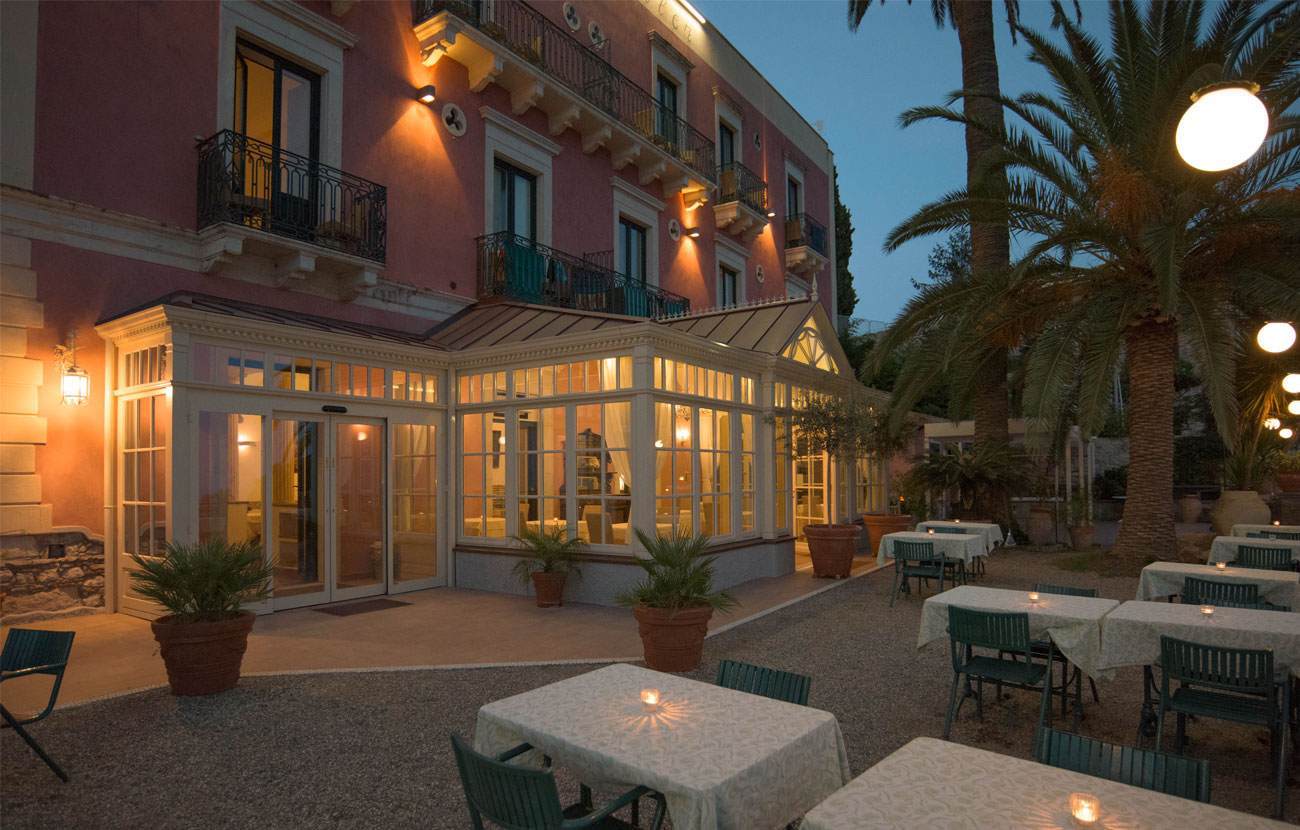Sicilian Villa in the historic center of Taormina
Comprehensive health and safety measures,
flexible cancellation policy
The charming Boutique Hotel Villa Schuler welcomes you in the heart of Taormina, Sicily, in a magnificent location immersed in an extraordinary exotic park in a quiet and panoramic position with breathtaking views over the bay of Naxos and the volcano Mt. Etna.
Set within expansive private grounds characterized by several relaxation areas and romantic corners that offer ample room to enjoy the hotel’s great outdoors.
Carefully restored Hotel Villa Schuler in Taormina offers elegant atmospheres and personalized hospitality that puts the guest at the center of all attention in order to really make you feel at home.
Very attractive spaces and rooms featuring state-of-the-art amenities assure an unforgettable experience.
Easily accessible by car and with garage and valet parking service: a real rarity in the historic center of Taormina.
Opening dates 2026: March 14 to November 23, 2026
Hotel Villa Schuler NEWS:
HACKER STRIKE, data from thousands of passports stolen in Italy hotels summer 2025:
We would like to reassure all guests who have stayed at our hotel that Hotel Villa Schuler was NOT AFFECTED by any cybercriminal activity.
We actually have never scanned and will never scan guest documents, and the simple photocopies we make at check-in are safely secured in-house and destroyed/shredded later.
Christine, Gerhard, and Andrea Schuler
Owners & manager
Special Offers
Read the extraordinary history of our hotel
Visit our rooms and choose the one you prefer
Experience Villa Schuler through photos, videos and virtual tours
Fly to us!
Come to Sicily from all major European and international airports! Book your flight and discover the wonders of Taormina and our region!


























